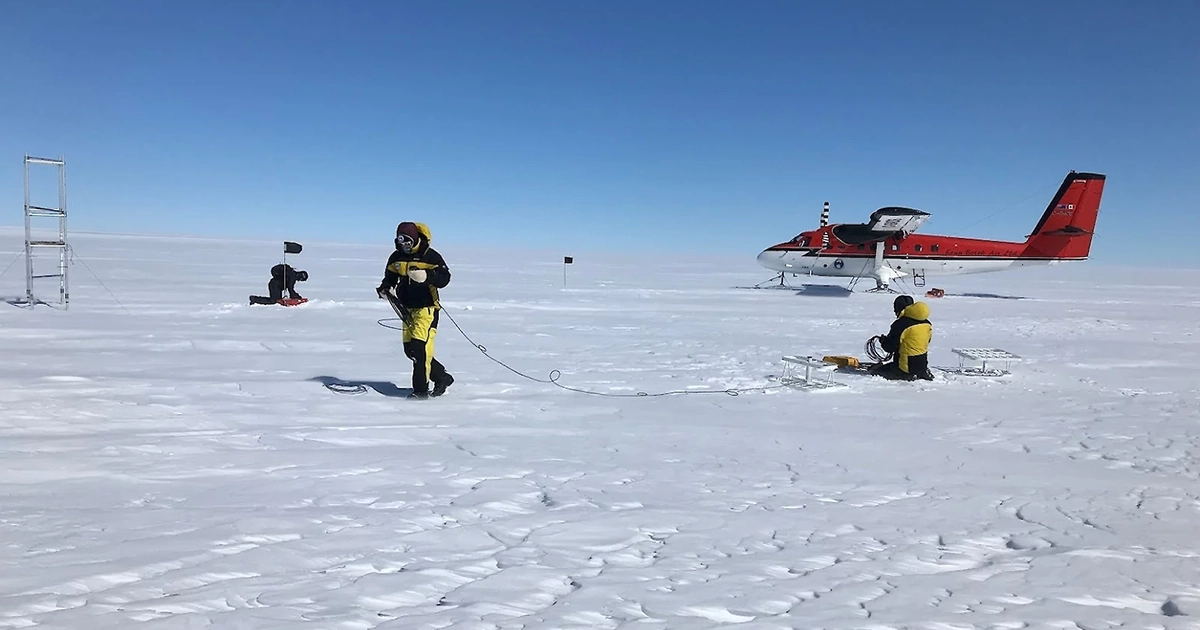Over the next decades to centuries, will melting of the Antarctic Ice Sheet (AIS)—Earth’s largest ice mass—cause global sea level to rise by five meters, two meters or less?
It’s a difficult question to answer. The Antarctic and Southern Ocean environment is dynamic and unpredictable. This means that there is uncertainty in our understanding of the behavior of the AIS and what this means for future sea-level rise.
Now scientists from Australia, the United States, and Canada, have identified actions that will help reduce uncertainties about the future behavior of the ice sheet and sea-level rise projections.
Their work will also guide research to reduce the uncertainties faced by policymakers, decision-makers and communities needing to plan and adapt to a changing world.
Sources of Uncertainty
The team of researchers, led by Australian Antarctic Division glaciologist Dr. Ben Galton-Fenzi, reviewed research on the key processes and potential feedback that can accelerate AIS retreat.
“We examined how Antarctica will contribute to sea-level change in the coming decades to centuries and where the uncertainties lie that make it difficult to project future behavior of the ice sheet,” Dr. Galton-Fenzi said.
“Then we looked at what processes and regions should be the focus of future scientific research to reduce these uncertainties.”
If the AIS were to completely melt, global sea levels would rise by about 58 meters. The huge East Antarctic Ice Sheet (covering two thirds of the continent) would contribute about 52 meters of this sea-level rise, while the West Antarctic Ice Sheet and the Antarctic Peninsula would make up the rest.
In the simplest terms, the Antarctic Ice Sheet grows due to snowfall that compresses into ice, and shrinks due to iceberg calving and melting from beneath the ice shelves.
However, there are many complex interactions and feedback mechanisms involved in these physical processes and how the ice moves that make it difficult to predict ice sheet behavior. Critical thresholds if they are crossed can dramatically amplify the contribution of Antarctica to sea-level rise.
Also contributing to the uncertainty are limitations with current climate and ice sheet models in simulating these physical processes and feedback mechanisms, and a lack of data that can capture physical processes at the right time and spatial scales.
Sea-level rise is also uneven across the globe due to what are known as “gravitational, rotational and deformational effects”.
“When the Antarctic Ice Sheet loses mass from ice melting into the ocean, it weakens the gravitational pull of the continent, causing the sea level to drop close to the continent, but rise in more distant locations,” Dr. Galton-Fenzi said.
“The loss of ice mass and the redistribution of water in the ocean also cause changes in the rotation and shape of the Earth, which adds to the spatial variability in sea level.”
Areas for Action
Among the priority areas for future research identified by the team are high resolution measurements focused on regions thought to be particularly vulnerable to rapid change, to better understand the physical processes impacting on the ice sheet.
Improved understanding based on these observations can then be used to improve models and analytical tools which, in turn, improve projections of sea-level rise that can inform effective policy decisions.
“By reducing the uncertainties associated with the Antarctic Ice Sheet and sea-level rise, we’ll give policymakers and decision-makers better information to develop coastal planning measures, resilient infrastructure and adaption strategies," Dr. Galton-Fenzi said.
“Interdisciplinary and international collaboration, particularly in regions vulnerable to rapid retreat in the East Antarctic Ice Sheet, will enhance our overall research quality and accelerate progress in reducing the level of uncertainty.”
The research will appear in Antarctica and the Earth System, published by Taylor & Francis Group, in early 2025.



